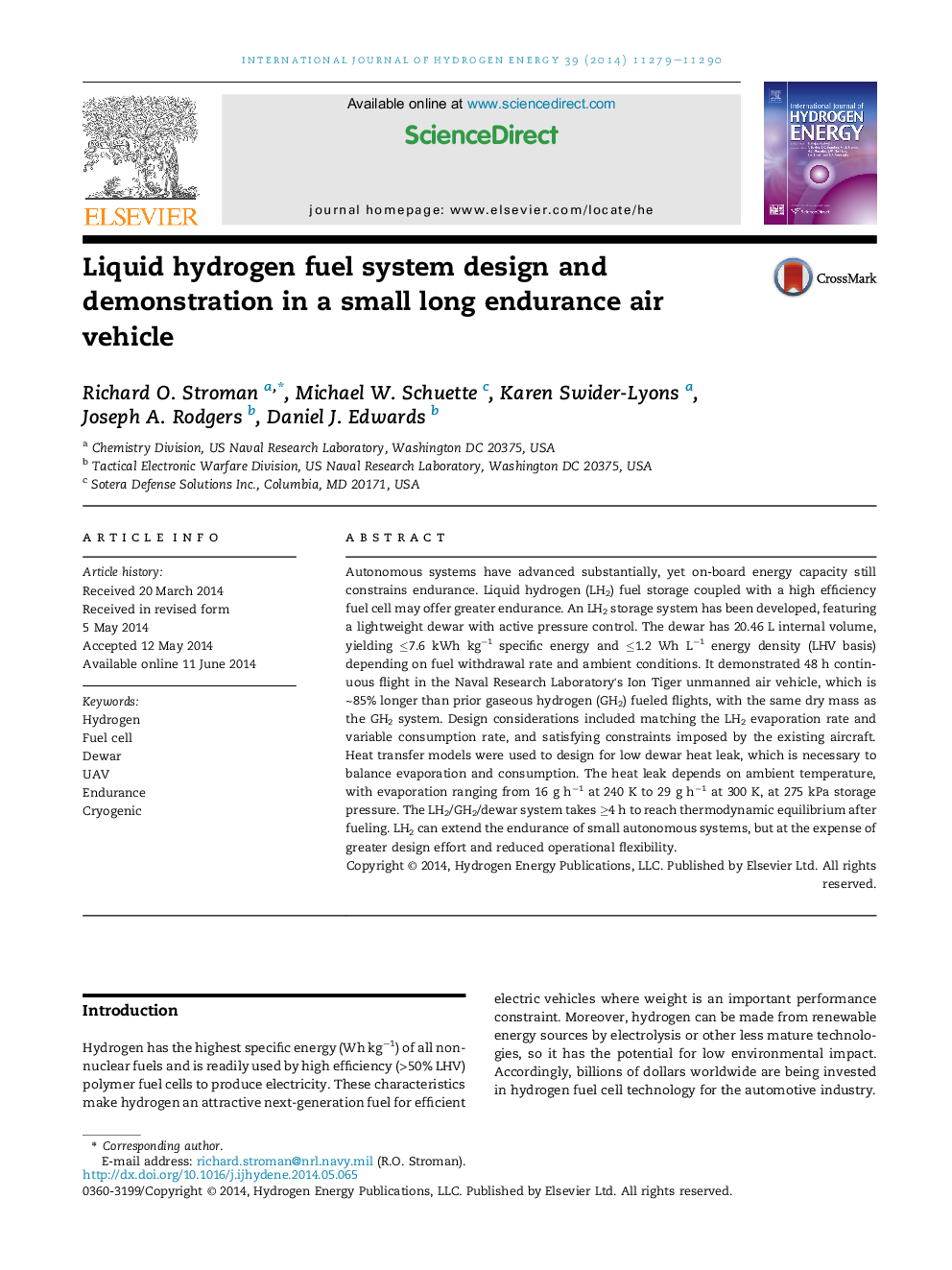| Article ID | Journal | Published Year | Pages | File Type |
|---|---|---|---|---|
| 1272269 | International Journal of Hydrogen Energy | 2014 | 12 Pages |
•A liquid hydrogen (LH2) fueled small unmanned aircraft has been demonstrated.•LH2 fuel can provide longer endurance than gaseous hydrogen, depending on heat leak.•Low heat leak is necessary to accommodate variable aircraft consumption rate.•Low heat leak is achieved by a dewar design and multilayer insulation for radiation.•Continuous fuel consumption eliminates conduction heat leak through fuel line.
Autonomous systems have advanced substantially, yet on-board energy capacity still constrains endurance. Liquid hydrogen (LH2) fuel storage coupled with a high efficiency fuel cell may offer greater endurance. An LH2 storage system has been developed, featuring a lightweight dewar with active pressure control. The dewar has 20.46 L internal volume, yielding ≤7.6 kWh kg−1 specific energy and ≤1.2 Wh L−1 energy density (LHV basis) depending on fuel withdrawal rate and ambient conditions. It demonstrated 48 h continuous flight in the Naval Research Laboratory's Ion Tiger unmanned air vehicle, which is ∼85% longer than prior gaseous hydrogen (GH2) fueled flights, with the same dry mass as the GH2 system. Design considerations included matching the LH2 evaporation rate and variable consumption rate, and satisfying constraints imposed by the existing aircraft. Heat transfer models were used to design for low dewar heat leak, which is necessary to balance evaporation and consumption. The heat leak depends on ambient temperature, with evaporation ranging from 16 g h−1 at 240 K to 29 g h−1 at 300 K, at 275 kPa storage pressure. The LH2/GH2/dewar system takes ≥4 h to reach thermodynamic equilibrium after fueling. LH2 can extend the endurance of small autonomous systems, but at the expense of greater design effort and reduced operational flexibility.
